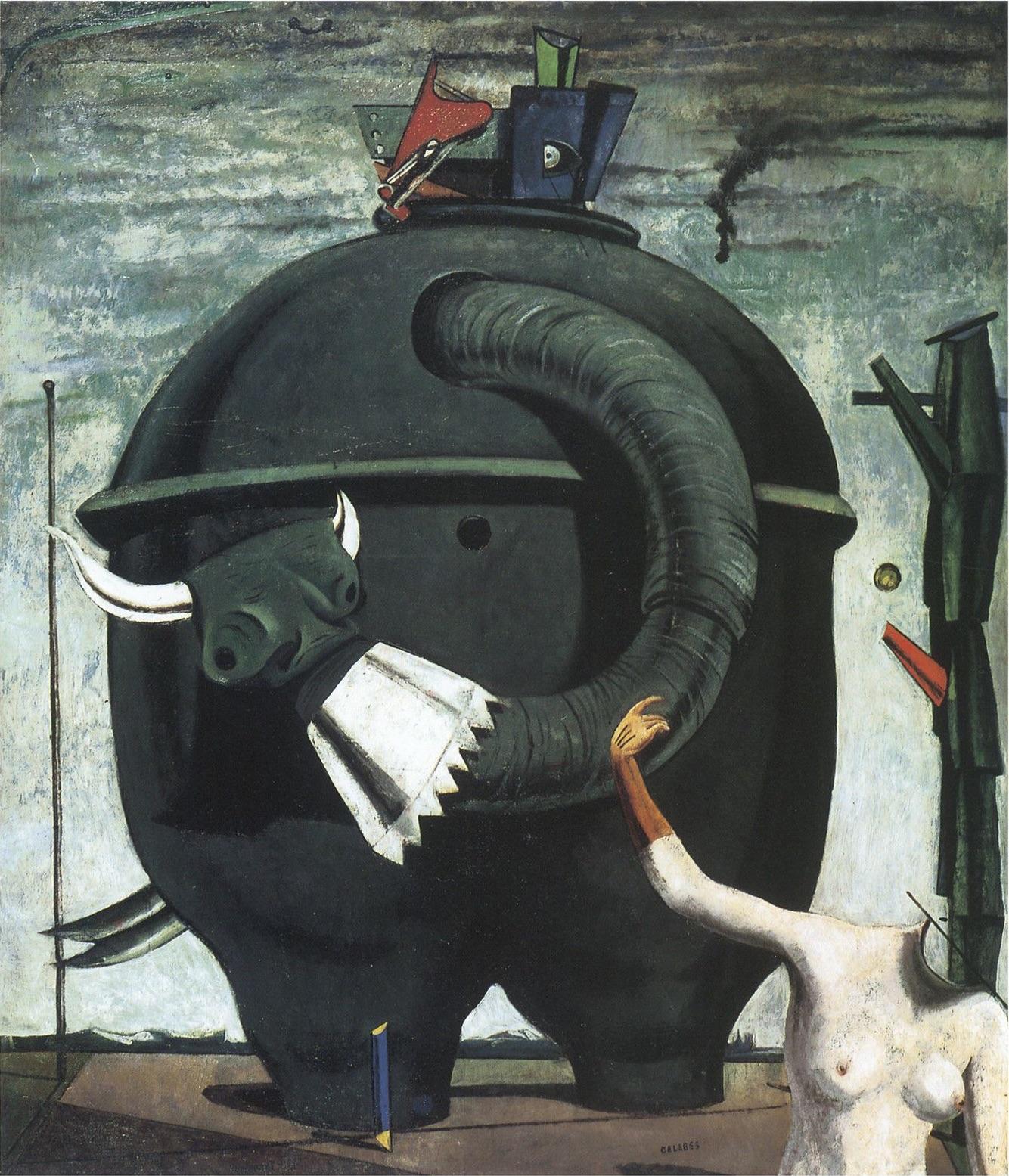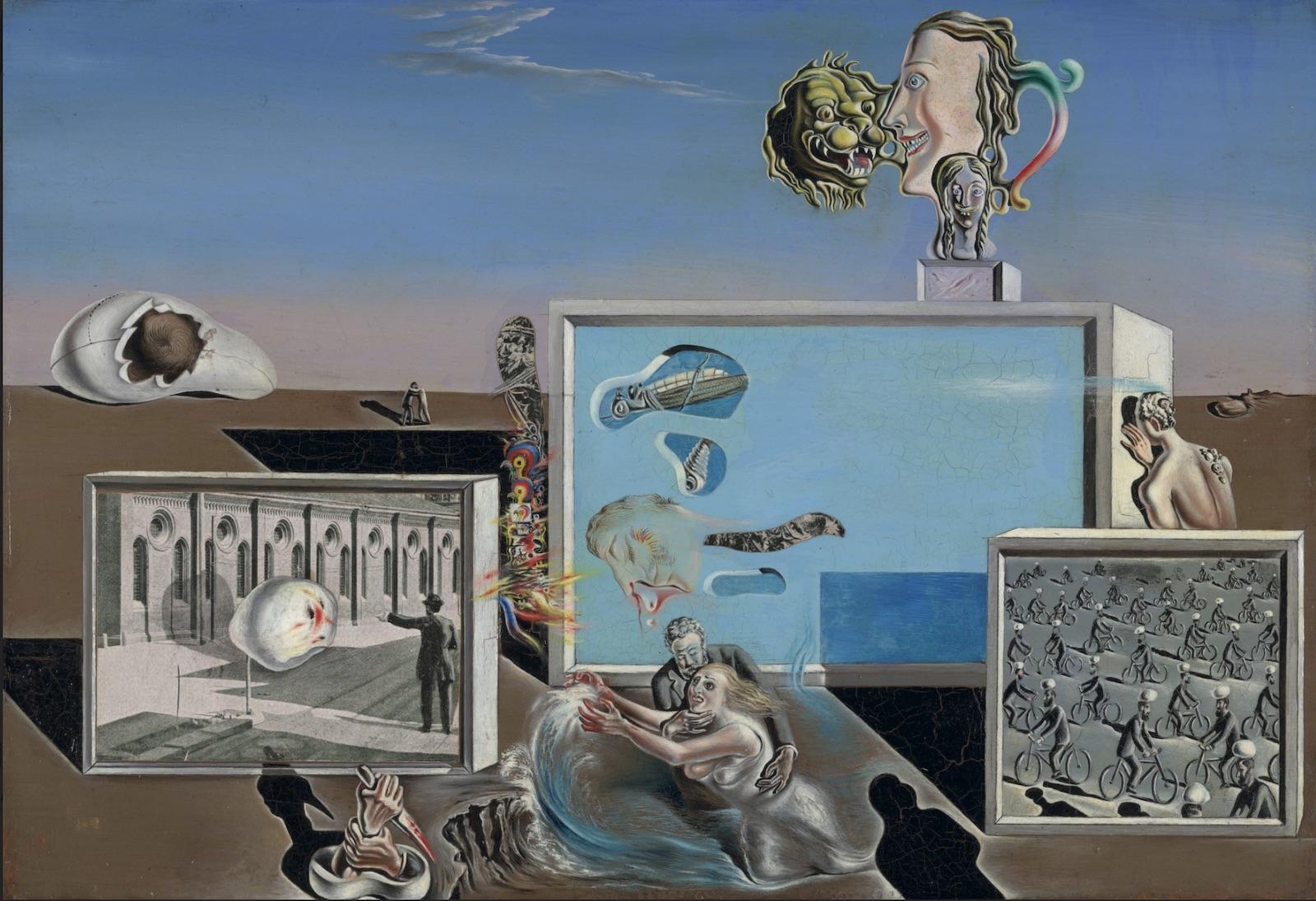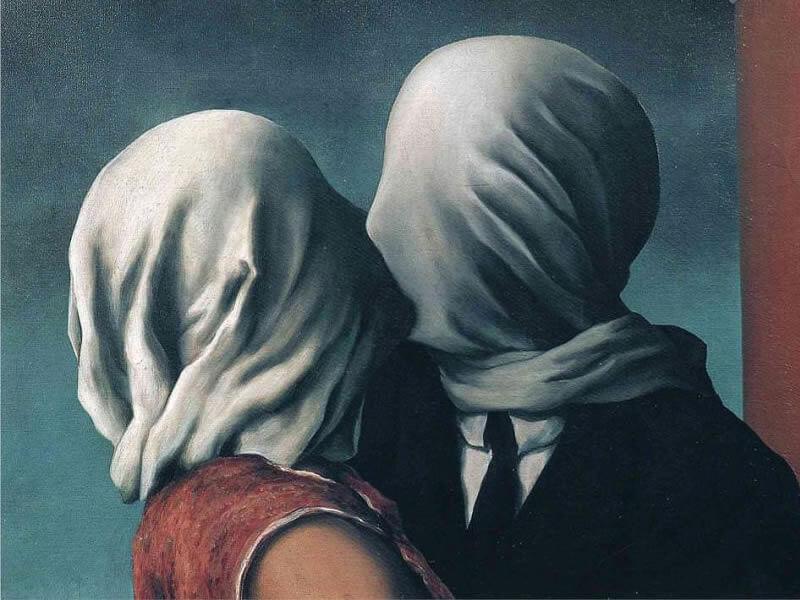Though surreal is often used as a descriptor of, among many things, art—true Surrealist work adheres to the movement’s manifestations.
Generally speaking, Surrealists were concerned with the uncensored function of the brain. Many creatives in the group practiced automatic writing, the process of writing all one is thinking without any filtering or editing. Many artists approached their visual work in a similar way, laying down whatever came to mind at the moment. As a result, these paintings can often be unsettling, confusing, and deeply intimate.































